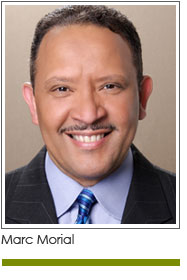 “This is an important tipping point…a transformation from a mostly white baby boomer culture to the more globalized multi-ethnic country that we are becoming.” William Frey, senior demographer, the Brookings Institution
“This is an important tipping point…a transformation from a mostly white baby boomer culture to the more globalized multi-ethnic country that we are becoming.” William Frey, senior demographer, the Brookings Institution
We’ve been hearing about it for years, and now the time has come. Last week the Census Bureau announced that for the first time, the birth rate of people of color exceeded that of whites: 50.4% to 49.5%. America is still a majority white country, with whites comprising 63.4% of the total population. But, the Census Bureau report covering the 12-month period that ended last July reveals that at a time when the white birth rate is declining, there are now 114 million minorities in the United States, or 36.6% of the population. Hispanics, now America’s largest minority group, led the way last year with 26% of total births. The African American percentage was about 15%, and for Asians it was about 4%. The country now has five majority-minority states: Hawaii, the District of Columbia, California, New Mexico and Texas. Clearly, we are moving inexorably towards the day in 2050 when the United States is a majority-minority nation. As noted in a recent Huffington Post column, “With fewer white babies being born than Latino, black and Asian babies that may come a lot sooner than 2042 - the target year which demographers repeatedly cite.”
This increase in the minority population is due in part to the influx of Hispanic immigrants over the past few decades, a trend which is now slowing. It also reflects the fact that with a median age of 42, the white population is aging while younger minorities, especially Hispanics, are moving into their peak child-bearing years.
With African Americans and Latinos still over-represented among the unemployed and high school drop-outs, this demographic shift should be a wake-up call to policy makers and employers. America cannot move forward if it continues to leave communities of color behind. We will not be able to grow our economy or compete in the 21st century global marketplace if we continue to squander so much of our young human capital.
Even as job creation continues to pick up, the unemployment rate for African Americans has exceeded 10% since 2008. It now stands at 13%. The rate for Hispanics also outpaces the national average at 10.3%. The high school dropout rate is also highest in these communities. It is ironic that the Census Bureau report was released on May 17th, 58 years to the day that Thurgood Marshall won the landmark Supreme Court case ending “separate but equal” segregation in our nation’s schools. While the hope was that Brown v the Department of Education would lead to better schools and a better education for all our children, America’s public schools are more segregated today than ever. And schools serving African American and Hispanic students remain unequal in terms of resources, funding and quality teachers.
Recent political attacks on affirmative action, immigration and voting rights also make it clear that while African Americans and Hispanics are growing in numbers, our fight for civil rights and equality is far from over. It is time to put these old divisions behind us. The future is fast approaching and its color is going to look a lot different than the shades of the past.
Marc Morial is the president and CEO of the National Urban League.











